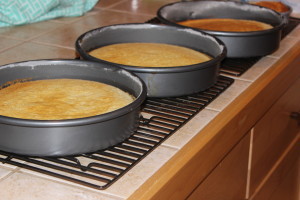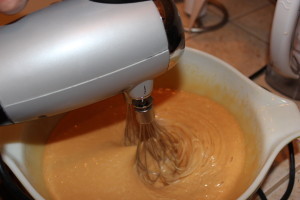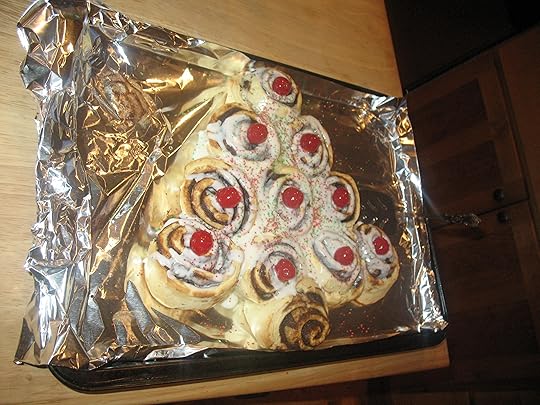R.L. Syme's Blog, page 17
February 27, 2014
My First Day as a Professional Writer

In RWA (Romance Writers of America), there are two professional designations that members can attain to align with other members in their similar situation. It creates networks that can better support authors in certain pieces of their careers.
The first designation is called “PRO”. It consists of anyone who has completed and/or submitted a manuscript, full-length. I was a PRO member in 2010, less than five months after joining RWA. I was committed. Less than a year later, I was contracted. Then published. I went to the PRO retreats at Nationals. I was on the PRO loop. It was a fantastic support system.
But after having been published for awhile, and trying to make the jump to actually making money writing, I started to get frustrated. I started to question my decisions. I changed directions.
 But then, yesterday, I got the notification that I had made the second designation, which is called PAN. That stands for Published Authors Network. While there are plenty of published authors in PRO, the requirements to make PAN are essentially set up to statistically separate those who are going to make a living from writing. Or who already are.
But then, yesterday, I got the notification that I had made the second designation, which is called PAN. That stands for Published Authors Network. While there are plenty of published authors in PRO, the requirements to make PAN are essentially set up to statistically separate those who are going to make a living from writing. Or who already are.
I used to feel angry about being published and not being PAN. But I have realized that PRO was a necessary journey step for me. I needed to be in the place where I was seriously producing manuscripts, getting ready to be professionally consistent. I wasn’t in a place in 2009 where I was ready for that to happen. Today, I understand the world–the publishing world–so much better, and I recognize that I had so much to learn in 2010. I needed PRO. I was on a journey.
Which reminds me that I’m still on that same journey. I haven’t “arrived” just because I’ve made a PAN designation. Rather, this is just another step on my journey. I know that I am becoming a professional every day, that I have been becoming every day.
So, while this is a fantastic step on my journey, it’s not the end. And today, as I sat down at my desk to crank out words, it was good to remember that there’s still a lifetime of steps to take on this journey. Because while today was my first official day as a professional writer, it was also just another day in my career as an author.
It’s important to stop and celebrate milestones. But it’s also important to keep walking.
February 22, 2014
Revelatory Caramel Cake

I read an article in Food & Wine Magazine that raved about this cake, so I wanted to make it myself, just to see if it was really that good. Several of the comments on the recipe had to do with the instructions for the frosting being off and the recipe on the website not being properly tested, etc. So I just wanted to try it myself and see if the recipe was as good as all that, or if it really wasn’t worth my time.
Let me tell you, this will be my new go-to cake recipe. The cake itself was absolutely unbelievable. I made the cake according to the recipe on the Food & Wine website, and it was perfect. I wouldn’t change a thing. The frosting… well, that was a little different.
The frosting definitely posed some problems.
 Because it’s a candy frosting, and I’d never made a candy frosting before, I went out and got the proper utensils. A heavy-bottom pan, a candy thermometer, and the ingredients. As I made the recipe exactly, it did not turn out like the picture. But since then, I’ve learned a few things about candy frostings, and I think my issue was that I pulled the frosting off before it had passed the soft ball stage. (i.e. the temperature in the recipe on the website is wrong.) There were some other speculations in the reviews about omitting the milk from the frosting recipe, and definitely increasing the temperature you let the candy get to. The one thing is, this cake takes forever to make. It’s probably a five-hour process, by the end.
Because it’s a candy frosting, and I’d never made a candy frosting before, I went out and got the proper utensils. A heavy-bottom pan, a candy thermometer, and the ingredients. As I made the recipe exactly, it did not turn out like the picture. But since then, I’ve learned a few things about candy frostings, and I think my issue was that I pulled the frosting off before it had passed the soft ball stage. (i.e. the temperature in the recipe on the website is wrong.) There were some other speculations in the reviews about omitting the milk from the frosting recipe, and definitely increasing the temperature you let the candy get to. The one thing is, this cake takes forever to make. It’s probably a five-hour process, by the end.
When I made my version, I didn’t have quite as much difficulty with the frosting, but I sort of treated it like a dulce de leche cake and I poured on a bit of frosting and let it soak in and then a bit more and let it soak in and then a bit more. By the end, it might have been the best cake I’ve ever tasted. But it was not like the picture on the Food & Wine website.
So I decided to make it again, for a friend’s birthday. Instead of making the fussy candy frosting, I went with one of the best frosting recipes I make for a sheet cake I use often. Once again, it’s more of a pouring experience than a frosting one, but it’s just so tasty.
(Substitute frosting recipe)
Bring to a boil: 1/4 cup butter or margarine, 1 cup sugar, and 1/4 cup milk. Once on a low boil, remove from heat and add 1/2 c. chocolate chips. Don’t cool. Continue beating until it thickens. Once relatively thickened (but still pourable), pour it over the cake and spread to the corners.
It was absolutely fantastic. In fact, this time, I added just a touch of cinnamon to the frosting mixture, and it turned out to taste quite a bit like the sheet cake we make, except with a firmer, more luscious cake underneath it. (The sheet cake, while tasty, tends to fall apart easily.)
I think I may make this again in the future and try the candy frosting after all. We shall see.
February 19, 2014
Spring (Cleaning) Is Coming!

There, I said it. SPRING! Spring is coming.
Those of you who are fans of Game of Thrones know the ominous way in which House Stark always says “Winter is Coming” as though it were the worst news in the world. Well, when I say Spring is Coming, I mean it in the best possible way.
After months of gloomy winter, I think we’re all looking forward to spring. I don’t know about you, but it’s been teasing us around here with a little sun and a little bit of warm temperature. But spring isn’t really here yet. Thats why I’m posting.
I recently read an article about tips from professional organizers. Not necessarily about spring cleaning, but one of the things she discussed made me think about spring cleaning. She said true organization takes preparation not cleanliness. Everything having a place doesn’t necessarily always mean everything looks clean. In her words, if you can have a fully clean house in 30 minutes, you are organized.
Well, that makes me feel better already. First of all, we’re all probably more organized than we think we are. But second, a big task like Spring Cleaning can be easily done if we prepare for it and then tackle it a little bit at a time.
 Now, different articles I read on the subject gave different advice. One person suggested setting aside a certain number of days to do Spring Cleaning and tackling one room at a time. Another person suggested doing one task at a time (so, for instance, you would declutter on one day, you would organize the clutter on another day, you would repopulate on another day, you would clean on another day, etc.). It seemed like a lot of the differences were based on the strategy and the space size.
Now, different articles I read on the subject gave different advice. One person suggested setting aside a certain number of days to do Spring Cleaning and tackling one room at a time. Another person suggested doing one task at a time (so, for instance, you would declutter on one day, you would organize the clutter on another day, you would repopulate on another day, you would clean on another day, etc.). It seemed like a lot of the differences were based on the strategy and the space size.
I’ll be honest, I don’t have a very big house. Excluding bathrooms (or, perhaps, including bathrooms in a bedroom) and including my garage, I have eight rooms in my house, and none of them are very large (or that cluttered–I’ve only lived here two years). If I abided by one person’s suggestion, that would be two months worth of Saturday cleaning. (So, doing my bedroom one Saturday, my guest bedroom another Saturday, my laundry/storage room another Saturday, etc.) Or, it would be about a week of tackling one room every day.
But I do have enough clutter that I think I want to do a garage sale. Plus, I’d like to get a new dining room table, but that would require me not only getting rid of the old one, but creating another place to store things (because my current dining room is basically a storage area).
So here’s my plan. I’m going to take the preparation method. For the next two weeks, I’m going to gather organization supplies from different places in my house (shelves I’ve been meaning to put up, boxes from moving, sharpies, sticky notes, etc.). Make sure I have the cleaning supplies I need (garbage bags, disinfectant, dusting rags, etc.). And then buy whatever I don’t have (I imagine I’ll have to buy some boxes, etc.).
 And once I’m all prepared, it will come down to my plan of attack.
And once I’m all prepared, it will come down to my plan of attack.
I’m going to begin with the garage because that’s where I plan to store the majority of the “clutter” that I want to sell, and if I’m going to store anything in the garage, I have to do a few things to prepare. Rearrange the placement of some things, move the stand-up freezer, clear out the recycling. Throw some things away.
Then, I’ll move clockwise around the house, ending with the office. Why? Because the office has a piece of equipment in it that I want to move into the living room, but before I do that, I have to make room for it.
It all seems so simple, doesn’t it?
Here’s what I will do in each room (at the encouragement of the professionals). I’m going to divide my things into five groups. (1) Trash. (2) Donate. (3) Move to Another Room. (4) Give to a Specific Person.) and (5) Marinate. I think these piles are genius. They force me to make an immediate decision, but also allow me a back-up plan.
So, here we go. Here’s to getting ready for Spring Cleaning.
What about you? Are you going to Spring Clean this year? What are you looking forward to doing with the less clutter / more space / more money / clean house?
January 14, 2014
The Outcast Highlander Blog Tour
To celebrate the release of The Outcast Highlander, I’m having a blog tour, hosted by Bridging the Gap Promotions. It lasts from January 13 to January 31. There are two prizes. One is a Kindle Paperwhite. The other is a set of Scottish romances. You can enter below, or at any of the stops on the tour, which are listed here.
December 31, 2013
The Fourth Day of Christmas

On the fourth day of Christmas, in the famous counting song, the singers true love gave four collie birds (blackbirds–not “calling birds” as is commonly sung today). Blackbirds are generally accepted to be negative omens. No matter who’s looking.
Perhaps the one notable exception is the song “Blackbird” by the Beatles, where Paul McCartney writes of the freedom of the African-American people, using the symbolism of a blackbird whose been waiting to arise, learning to fly on broken wings.
The fourth feast day celebrates the Feast of the Holy Innocents, which is a combination of celebrating and mourning. The Holy Innocents were the babies who were killed in an attempt to kill the prophesied king born in Bethlehem. According to Scripture, King Herod had all the babies in Bethlehem massacred in order to kill Christ. However, the Church also sees them as being martyrs for the preservation of Christ, so they are celebrated for their sacrifice.
The practice of grief, especially for babies or for the unborn, is full of shrouds. Of course, the grieving shrouded themselves in order to set themselves apart. But additionally, when it comes to the death of children (especially babies), we shroud ourselves as a culture. We tend not to be comfortable talking about the death of children, especially when it’s happened to someone near us. The paralyzing fear of some parents, worried about losing their children, may be part of it. The lack of comfortability may be another part. For what would you say to someone whose child has been taken from them? There is no consolation for them. They must bear the grief and understand it in their own way. Knowing they can bear it is important, but it’s just not something we often discuss.
Today, I think not only of those who lost their children in the massacre of the Holy Innocents, but of those parents who have lost babies (born or unborn). I know many. They are in my prayers today, and all my intention goes to their comfort. Reason has no place in this discussion. There is no reason. There is only loss and comfort.
Today’s recipe, in honor of shrouds, is for a drink called The Purple Shroud.
Todays’s Christmas Carol was written for the Feast of the Holy Innocents. It’s called the Coventry Carol. If you’re not familiar, you should take a listen. It’s beautiful.
By the way, speaking of babies…. my baby is out in print today! You can buy it here!
December 27, 2013
The Third Day of Christmas

After two days of celebrating the Twelve Days of Christmas, I’ve definitely realized that it’s a good idea not to do any eating or celebrating before the feast time, because it’s a lot of celebrating and feasting.  So today, I went a bit of a different way.
So today, I went a bit of a different way.
Because I got the fruit-of-the-month club for Christmas (from Harry and David–I highly recommend–and they’re having 20% off sale right now) and had a few pears left, I decided to make a pear smoothie to eat for breakfast and lunch. Pears, some leftover pineapple juice, a handful of grapes, 1/2 a box of blueberries, some cranberry juice, and an apple. It was fantastic and refreshing. And I needed it, because we’re going to have quite the spread tonight.
So, as the third day of Christmas, today is the feast of St. John. He’s the patron saint of, among other things, writers. And interestingly enough, one of the suggested activities of the day is drinking St. John’s wine. These activities seem relatively consistent with one another. All of the writers I know are wine drinkers.
But I also wanted to look at the connection between St. John and writers, and why he is our patron saint, and what that means for this feast day.
John wrote three epistles, one gospel, and the apocalypse. Specifically, the gospel gives us a lot of insight into his connection to all that is artistic about the Bible. Where the first three gospels are written in the style of a history, the fourth gospel (John’s) is written in the style of an epic. It begins with the beginning of time and ends with the victory of good over evil. It’s a microcosm of the whole Bible, and is masterfully written. It’s the gospel most often encouraged to be read by new converts because it’s the most dramatic (experiential) of all the gospels.
So John, the artist, who created the experiential gospel, has a feast day honoring him. What might one do on the day set aside to honor artists, writers, and the like? Certainly, one would think, with beauty. In my opinion, this is what sets John’s gospel apart from the other three. There is a theological beauty in the other three gospels, certainly. But there is literary beauty in the gospel of John. So experiencing literary beauty is important.
I spent my morning reading Lord of the Rings and my afternoon watching the Hobbit. I did a fruit cleanse in order to keep my mind sharp to appreciate the beauty of what I read, and tonight, I will indulge in good food and good company–the beauty of relationship. So today is all about celebrating beauty.
My recipe of the day for today is for St. John’s wine (mulled wine). I’m not going to be making it, but I thought I would link to it so you could see it. We’ll be having mulled cider at the party this evening, but there are kids around, so no mulled wine.
My celebration of the day, as I said, is to celebrate literary beauty. Tonight when I get home, I will read part of St. John’s gospel, just to remind myself of its beauty.
My song of the day is what I consider to be the most beautiful Christmas carol: O Holy Night. This is my favorite version of that song:
Okay, yes, that was originally done by N’Sync–don’t judge. The arrangement is incredible. And this guy does as good a job as they do. Anyway. Beautiful. Tune in tomorrow for the next New West Test Kitchen, and also for the fourth day of Christmas. Only eight days left.  Join me tomorrow.
Join me tomorrow.
December 26, 2013
NWTK: Christmas Tree Coffee Cake

This was a staple of my childhood. Every Christmas morning, there would appear on the breakfast table, a Christmas Tree Coffee Cake. It has a very particular look and taste and is unlike anything I’ve had before. There’s a shortcut version I often see made out of cinnamon rolls, but it just isn’t the same.
So this year, I decided to make the original. Oh, and don’t skimp on the nutmeg in the filling. It totally rounds out the taste. Also, I made the mistake of using 20 oz. of pineapple this time instead of 16 and it really made too much filling. But definitely try this one out! You won’t be disappointed, I promise.
4-4 ½ c. flour
½ c. sugar
1 ½ tsp. salt
2 pkg. yeast
¾ c. milk
½ c. water
½ c. butter
1 egg
Filling:
2 pkg 8 oz. cream cheese
½ c. sugar
¼ tsp. nutmeg
dash of salt
½ t. vanilla
2-8 ¼ oz. cans crushed pineapple (drained)
Topping:
11 cherries (halved)
2 c. powdered sugar
red & green sugar
3 T. milk
Add yeast to 2 c. flour, sugar, and salt, and mix. Combine all liquid (except egg) and heat to warm. Add to dry ingredients. Beat 2 minutes. Add egg. Add 1 more c. flour and beat at high speed a couple minutes. Add rest of flour to make batter stiff. Mix by spoon.
Refrigerate 2 hours (up to 3 days) in tight container. Immediately roll out like cinnamon rolls. Add filling and roll up tight. Cut with string in one-inch slices. Lay in tree shape on cookie sheet. Let rise 50 minutes or until double. Bake at 375 for 15 minutes. Cover edges with tin foil and bake 5-10 minutes longer. Frost. Decorate like a Christmas tree.
Like this: 
Also, here’s the version with cinnamon rolls:
The Second Day of Christmas

If you’ve read the previous two posts on my Twelve Days of Christmas, you’ll know that I’m trying to celebrate each of the feasts of the Christmas season this year, one by one. Yesterday was the Feast of Christ. Today, the second day, is the Feast of Steven.
(Of course, as it would happen, there’s a Dr. Who episode called “The Feast of Steven” and I was so tempted to celebrate today by watching Dr. Who. But I did not. Note my extreme self-control.)
(Double note: I also had a book release today, so there’s been a lot of celebrating that baby being born. However, I’m only going to mention that just this once. It’s hit the Scottish and Medieval bestsellers list, thanks to my amazing social media and PR guru. You may buy it here if you’d like.) 
Now, in many countries, today is Boxing Day, which was traditionally a day that honored people who work for you. So if you had a slate of employees, you would “give them a Christmas box” in gratitude for their service. Especially servants and the tradespeople who served your household. That’s the non-liturgical celebration.
The liturgical celebration is to honor St. Stephen, the first martyr. Now, martyrdom is a difficult concept to grasp for many modern Western people. We use the word “martyr” to mean someone who sacrifices their own desires to see something else happen. We call people martyrs who enjoy self-sacrifice.
But martyrdom is much more than being masochistic or manipulative, which is what most of what we call “martyr behavior” really is. Being a martyr wasn’t necessarily about self-denial. It was about conviction. And not the kind of conviction that gets you arguments on Facebook. The kind of conviction that gets you beheaded.
As part of my “celebration” of St. Steven’s Day, I’ve been watching some film portrayals of martyrs. There have been two of interest especially and both were in the television show, The Tudors.
First was the execution of Sir Thomas More. He was executed for disagreeing with King Henry VIII during the infamous Anne Boleyn debacle. Interestingly enough, one of my favorite actors played him, Jeremy Northam. I’m not totally sure that Sir Thomas More was that hot, but here’s hoping. Anyway, in the last days of his life, his daughter came to see him and begged him to recant. She said, “Just say the words, Father. We all have.” His entire household was required to swear an oath that the king was lawful, and they did, although they did not believe it (again, according to the show). But Jeremy Northam could not say the words. His soul would not allow it. And they cut off his head because he would not say the words.
The second was the execution of the Cardinal Fisher. He had been tortured, he had been beaten, and when he came to the moment of his beheading, he expressed some fear. Not that what he believed was wrong, but that he should have to die for it. He said to the people, “Now that the time has come, I find that I need your help.” And the people cried out, “God bless you,” meaning, “You are right.”
When we talk about martyrdom, we’re not talking about someone who works more hours than they should or who doesn’t spend time with their family or who does the work of other people or who goes without something. Those are self-destructive, but that does not a martyr make.
There is no better literary representation of a martyr than the play Murder in the Cathedral by T.S. Eliot. Late in this play, after the soldiers arrive, we see the scene where Thomas Beckett decides to become a martyr. But of course, the piece of interest is that the true moment of self-discovery for the martyr’s heart happens not in monologue, but in silence. Eliot writes of a martyr, like Fisher or like More, who only had to say the words in order to be spared. Their conviction was so deep, they were willing to allow another person to end their life rather than say the words. They may not always have gone with strength, but they knew their hearts would not allow them to lie, their conviction ran so much through their very soul.
Think about this today. Do you have any conviction that runs so deep in your soul that you would rather allow yourself to be killed than to deny it?
The celebration of the martyr is not necessarily (I do not believe) calling us to seek out ways to inflame people or to offend people or to argue with people. Martyrs–the truly persecuted–are not going out of their way to seek out conflict. Rather, when conflict comes to them, they are not moved by it. They would rather give their life. They will not speak the words that disagree with their conviction.
What I believe the celebration of the martyr is trying to teach us is to know our hearts. Know what we are willing to give our life for and what just isn’t worth it. And to know when you should just say the words and when you should not. A martyr does not believe all things with equal conviction, but they know which words not to speak.
So today, my celebration, as I said, was to watch some television about martyrs. It was quite fun. But additionally, I want to celebrate the capacity we have to be true to our innermost convictions. The ability to believe with such devotion is truly a gift and should be celebrated. It is quite often maligned to be unpopular, but it is really a gift. To know one’s soul so completely that there is no question what one is willing to say and what one is not… that is beautiful. I celebrate that capacity for self-capitulation. I truly pray that those who have that capacity will be rewarded for it. I do not know if it is in me, but I doubt it. I do not know if I have the courage for martyrdom.
Anyway, my recipe for the day is Shepherd’s pie. I had some leftover prime rib and some mashed potatoes from the Christmas feast. I made a little gravy and added some peas and carrots. It was fantastic.
Steven’s Day Pie, which is the traditional food of this second feast day, is like shepherd’s pie, made specifically with turkey and ham, which were the most common feast meats of the Christmas feast. I did not make Stephen’s Day Pie, but the Shepherd’s pie was quite fantastic.
My carol of the day is “Good King Wenceslas” which contains a reference to the Feast of Stephen. This is the version I like the best. How can you not love Bing?
December 25, 2013
The First Day of Christmas

Of course, the first day of Christmas is the feast of Christ. Christ Mass. The day dedicated to observing the birth of Christ. In the liturgical calendar, it is the second most important feast. Easter first. Christmas second.
There are massive theological implications of this liturgical importance, but I’m not going to get into those right now because there are many places you can read about those from theologians and scholars who are much more exciting than I am.
As I said in yesterday’s post, the twelve days of Christmas are feast days. Not to be confused with the Christmas counting song. There are plenty of ways to celebrate the twelve days of Christmas. My good friend Jane, for instance, is doing the Twelve Days of Christmas in cocktails. (Todays is the Partridge in a Peartini–I swear, she is so creative!) Here’s a blogger who did the twelve days of Christmas service projects. There are all kinds of cool ideas for how to celebrate the Twelve Days on Pinterest including lots of gift giving.
But for me, I want to try to do celebration for the 12 Days. Because it’s been one of the hardest years of my life this year, and I haven’t done a lot of celebrating, I want to celebrate out the old year and in the new.
So on the FIRST day of Christmas, I’m going to put up my decorations. As I’m still waiting for our Christmas Feast with the Roast Beast, I’ll wait. But since it’s “common practice” among those who celebrate the twelve feasts to take down the decorations on the Twelfth Night, I don’t want to wait any longer to get the decorations up.
The other thing I want to do on the FIRST day of Christmas is make one of my favorite Christmas recipes. It’s called Christmas Tree Coffee Cake. I will post the recipe and pictures later, but those are my goals. Since today is the celebration of Christ, I want to do Christmas Tree things. In honor of the Christ on the Tree.
The traditional feast of Christmas was all about the Incarnation. The God who became Man. In all other forms of tales about gods in history, becoming human was beneath the gods. They were looking for more power, more influence, more followers. Their relationship to humans was often utilitarian. But the story we read in the Bible is different completely. It’s the story of a God with infinite power who chose to become Human in order to solidify our ability to relate to Him forever.
So in order to celebrate, I’m going to spend time solidifying my relationships today. I’ve talked to most of my close friends either yesterday or today. I still have a couple to see or call. I’ve spent quite a bit of time with my parents and family. I’m excited to say that I feel very incarnated today.
Tomorrow is the Feast of St. Stephen, the First Martyr. I look forward to finding out what tomorrow has in store for me. But for today, Merry Christmas!
December 22, 2013
The Twelve Days of Christmas

Contrary to what appears to be going on around Facebook these days, the Twelve Days of Christmas are not the days leading up to Christmas. They are, in fact, the days between Christmas and Epiphany, and the twelve days of Christmas are meant to be twelve days of celebrating feast. While the well-known Christmas carol is likely to have evolved as a way to teach counting to children (although there are other theories, but not well-supported theories), the season after Christmas day is the season of plenty.
The season before Christmas is meant to be a season of waiting. Advent. To prepare for Christmas.
We may feel like we “prepare” for Christmas too much already. But I encourage you to take away any preparations that you do that involve buying gifts and going to Christmas concerts. (Although both things are fine to do.) Think about how you spend the time preparing yourself for what the Twelve Days of Christmas are really supposed to be about.
In order to understand better, let’s look at the common purpose of feasting in the liturgical calendar.
The days prior to a feast were often filled with fasting. Prayer. Preparation. In fact, both Lent and Advent are liturgically connected to fasting. We practice it much more in Lent, but imagine if we had a healthy Advent fast, as well. What might we fast from?
Since the purpose of feasting is celebration and the practice of feasting generally includes much rest, much joy, and much plenty, we might think of fasting in a different light. Certainly, one could fast from foods. Rich foods, sugary foods, fatty foods. What have you. But one could also fast from other things.
Imagine those who cannot participate in the joy of feasting this Christmas. Perhaps they’ve lost a loved one or a job or a community. Perhaps they don’t have the luxuries you have. Perhaps their luxury blinds them to their depression (or is a crutch for their happiness). Perhaps they have lost something more important.
Fasting in preparation, to me, means that we not only deny ourselves something, but we replace it with something edifying. So in preparation for Christmas this year, I’ve been making presents, sure. I’ve been doing some fasting, even. I will likely be working straight up until the day of Christmas feasts.
But then I’m going to do something I haven’t done before.
I’m going to celebrate the Twelve Days of Christmas. And I’m going to do so on this blog. I have a book coming out, so I’m going to be doing plenty of celebrating already, but I’m going to attempt to look at the feasts of Christmas and how I can celebrate those feasts and honor the Spirit of Christmas in my house this year. And then I’m going to party. I may party alone (baking, making, cleaning–yes, cleaning can be a party). I will party with people. But I’m going to party. I’m going to get all I can get out of the Twelve Days of Christmas!
Granted, my preparation for Christmas without all the trappings of a typical Christmas hasn’t been intentional this year. It’s the result of a couple of major events that happened in my life, neither of which were intentional on my part. Or, perhaps better said, the effects of one were unintentional and the entirety of the other was unintentional. But both have robbed me of the luxuries of Christmas in a way I hadn’t really expected.
So I’m going to lay aside the somberness leading up to my Christmas this year. I’m going to finish my work, of course, because it’s due, frankly. But once Christmas comes, I’m going to take full advantage of the season of feasting this year, and I’m going to celebrate. New things, new people, new experiences, new celebrations. All of it meant to draw my focus toward next year, and toward the things that God will do for me, for us, for the world, for each of us.
Join me if you’d like. I’m going to put up my Christmas tree the day before Christmas and keep it up through the Feast Days. I’m going to celebrate the feasts and joy of Christmas as it was meant to be enjoyed. And I’m going to do my best to reflect here on what that means for me and my family in the coming year.
In these next few days, join me in celebrating the Advent of Christmas. Wait with me. Think with me. Pray with me. Sing with me. Sit with me. Just wait. Wait. Wait. Just wait.





